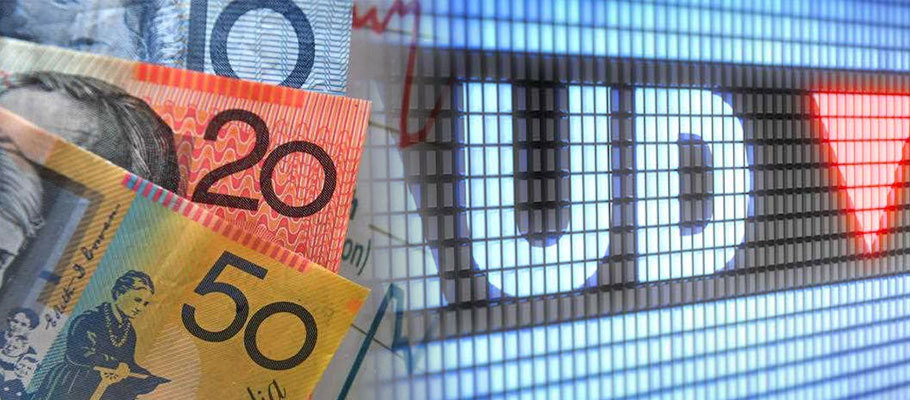
Published: January 30th, 2021
The Australian dollar (AUD) fell below expectations on Asian markets this week as analysts and investors see softening commodity prices in the short-term.
Currency strategists at Australian bank Westpac told investors on Wednesday that a correction in AUD/USD was expected before further gains come later in the year.
The aussie sat lower against all major rivals after declines in key commodity prices and several bellwether Asian stocks. Market watchers point to changes in the People's Bank of China (PBOC) monetary policy and intensifying worries about the global economic outlook in Q1.
The expectation now is that the PBOC is moving towards gradual policy normalisation, adjusting interest rates to stop bubbles forming in property and equities markets.
The past week has seen renewed lockdown in parts of China, and a ramping-up in Europe of restrictions, both of which have prompted investors to consider the costs that might yet drag on the global economy before mass availability of vaccines makes sustainable recovery a reality — something markets had previously assumed was just around the corner.
A juddery short-term growth outlook has been made worse by fading momentum for US President Joe Biden's promised $1.9 trillion stimulus bill. Across the Pacific, the aussie is feeling the impact of market reaction to US government gridlock on commodity prices.
Prices for industrial raw materials like metals have cooled, which is helping to stabilise the greenback. That has a knock-on effect for commodity currencies like AUD because gains in commodities have lifted its valuation in the last year.
Tightening credit conditions in China have sent zinc down 7 per cent from its Jan 8 highs, while iron ore is down 4.4 per cent on reports of build-up in port inventory. Crude oil is down 2.5 per cent due to Chinese travel restrictions. IT all adds up to near term correction risk for FX traders.
‘The potential for additional US fiscal stimulus and the quickening pace of American vaccine rollout should push growth differentials in the greenback’s favour, but support for USD will likely be fleeting,’ said FX strategists at Westpac.
About six per cent of the US population is believed to have been vaccinated already. The UK claims 10 per cent coverage, though the number is thought to include only the first of two jabs needed to complete inoculation. That could place both currencies up for pole position in the global economic recovery anticipated later in 2021.
The disparities in vaccine rollout appearing now in Europe could create potentially large economic growth differentials, Westpac currency analysts added. By their measures, FX price action in recent weeks has tracked in parallel to the growing disparity in vaccinations from country to country.
Against that backdrop, sterling and greenback have been outperformers, suiting perceptions that they’ve been relatively faster in getting COVID-19 vaccines out to the general population. With problems reported in France and the Netherlands progressing the vaccination programme, EUR has lagged for the same reason.
A re-calibration of Federal Reserve monetary policy could make the arguments against sustained strength in USD louder, giving breathing space for the aussie and other currencies to realise rallies. But near-term risks for AUD are seen on the downside as investors consider the global economy's immediate threats versus the odds of a successful vaccine rollout making the global pandemic disappear.
Analysts at Commonwealth Bank of Australia told Bloomberg this week that short-term USD strength and concerns about the sustainability of strong iron ore demand from China is pulling AUD down. They were referencing reports that Beijing plans numerous measures to shore up Chinese steel output. They include plans to minimise reliance on iron ore imports, which would be felt sharply in Australia. Down-under sends more than 80 per cent of its iron ore to China.
The outlook for AUD is complicated further by speculation that the Reserve Bank of Australia (RBA) will continue its extensive quantitative easing programme, threatening bond yields and potentially AUD as well. In September, central bank Governor Adrian Lowe expressed concerns about a strong aussie’s impact on the broader economy. The bank cut its interest rate to a new low of 0.10 per cent and set off on a bond-buying program, even as it warned that it was keeping close tabs on AUD.
CPI numbers for Q4 2020 were stronger than consensus, and analysts see no immediate downside from the stronger result. Inflation is still running well‑below target, and the RBA is expected to retain its forecast for inflation over the rest of 2021
The bank will announce its latest round of policy decisions next week. There is speculation that central bankers may be more open to extending the current QE programme, potentially acting even before the expiry date given the end-of-quarter inflation numbers.
Prices went up by nearly 0.9 per cent, faster than the 0.7 per cent expected by analysts. The good news is that it still leaves it well below the RBA's 2 per cent inflation target.
AUD/USD dropped to a fresh 2020 low of 0.7590 at week’s end. The aussie was weighed on by negative sentiment that also saw equities head southward. This was partially triggered by economic data indicating slow progress on recovery, but also by the Reddit 'WallStreetBets' equities scandal that roiled financial markets in the latter part of the week.
A group of retail investors’ sharing strategies on Reddit sent shares of US gaming retailer Gamestop surging after discovering that a hedge fund had taken out a large short position on the stock. By Thursday the stock had collapsed again as different brokers put restrictions in place on options trading.